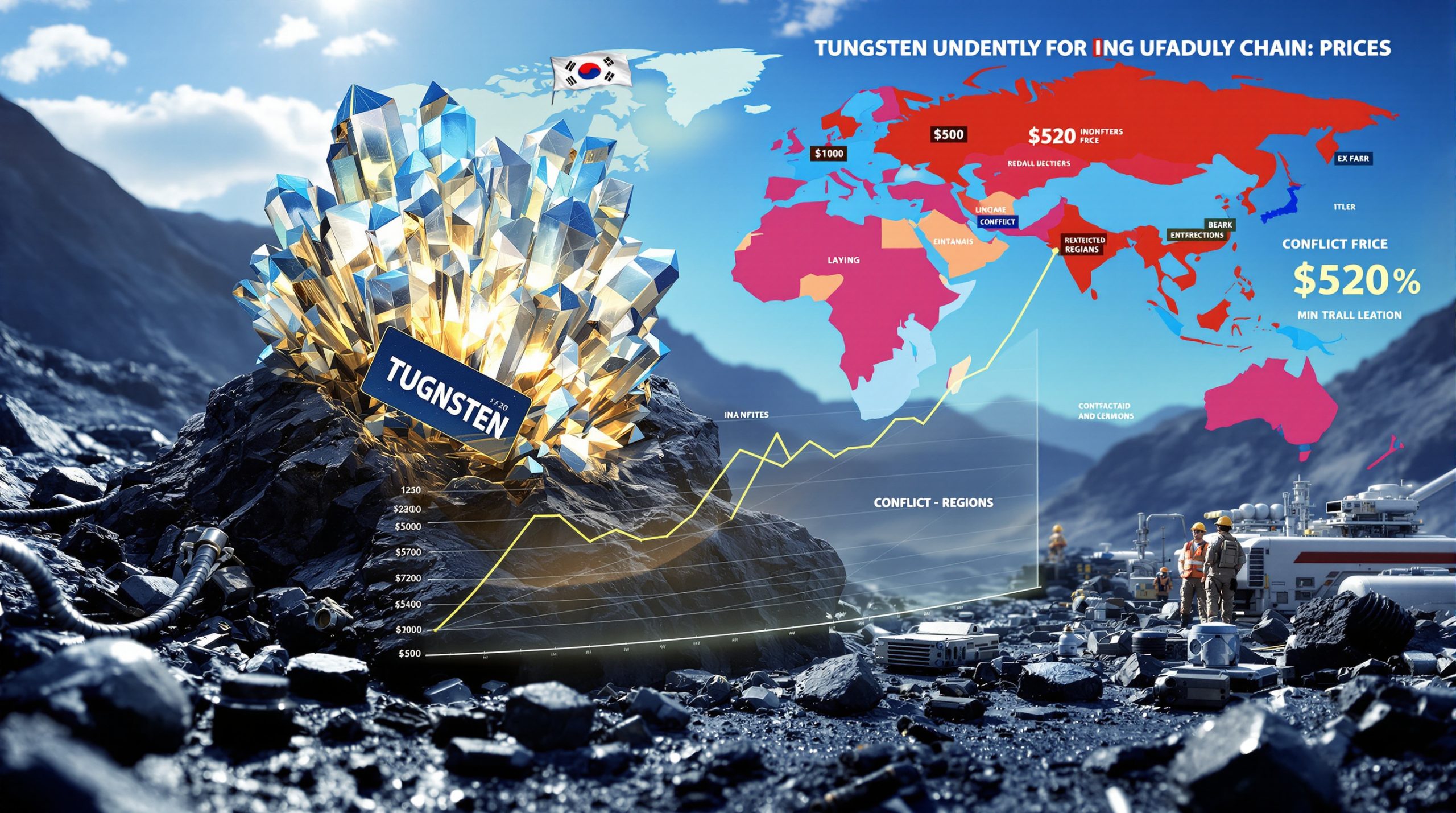Nickel Price Dynamics: Understanding China's Influence on Global Markets
The global nickel market has been experiencing notable shifts in recent months, with various factors influencing price movements and market sentiment. From price stability to seasonal supply constraints and evolving demand patterns, understanding these dynamics is crucial for industry stakeholders and investors alike. The relationship between nickel prices and China's influence has become increasingly complex as global supply chains continue to evolve.
How Are Current Nickel Prices Trending?
The Current Price Range and Market Stability
Nickel prices have established a relatively stable trading range since April, fluctuating primarily between $15,000 and $15,800 per tonne. This stability represents a significant change from the extreme volatility witnessed in previous periods. Market analysts note that prices have recently been testing the lower boundaries of this range, occasionally dipping slightly below $15,000, but without sustained downward pressure.
This price consolidation may indicate the market is finding its equilibrium after a prolonged period of adjustment. Technical analysts point to this range-bound trading as potentially signaling a bottoming process, with strong support emerging whenever prices approach the lower end of the range. Understanding nickel: importance & uses can provide valuable context for interpreting these price movements.
Early Signs of Price Recovery
Several key indicators suggest the nickel market may be entering the early stages of a recovery phase:
- Nickel pig iron (NPI) prices have recorded consecutive weekly increases, reversing previous downward trends
- Stainless steel prices in major markets have shown consistent upward movement
- Inventory levels at both LME warehouses and Shanghai exchanges have increased only marginally, defying analyst predictions of substantial surpluses
- Producer sentiment in key regions like Australia has improved markedly compared to the pessimism that dominated the previous year
- Reduced selling pressure from some major producers indicates growing confidence in market fundamentals
These signs are particularly significant when viewed against earlier predictions of prolonged market weakness. The resilience of prices despite challenging macroeconomic conditions suggests underlying strength in specific segments of nickel demand.
What Factors Are Driving China's Influence on Nickel Markets?
China's Anti-Deflationary Policies
China has implemented a strategic set of measures aimed at combating deflationary pressures within its economy, with profound implications for nickel and other industrial metals:
- The Chinese government has recognized that persistently low commodity prices create significant challenges for industries attempting to increase worker wages and maintain economic growth
- Stimulus measures targeting infrastructure and manufacturing have been deployed to counter broader economic slowdown
- Policy initiatives designed to reduce excess capacity across multiple industrial sectors are gradually rebalancing supply-demand dynamics
- Regulatory shifts now increasingly favor domestic metal producers through various support mechanisms
These anti-deflationary efforts represent a significant policy shift from previous years when controlling inflation was the primary concern. For nickel markets specifically, this policy direction creates a more supportive environment for price stability and potential recovery. However, Indonesian nickel challenges continue to play a significant role in global supply dynamics.
The Significance of Chinese Market Indicators
To accurately assess China's influence on nickel markets, several key indicators deserve close monitoring:
- The Chinese composite index has reached a 10-year high, gaining over 30% in the past year and signaling broader economic strength
- NPI and stainless steel price trends have shown consistent upward movement for several consecutive weeks
- Liquidity levels within the Chinese financial system remain accommodative, supporting industrial activity
- Market sentiment among Chinese investors and industrial consumers has improved substantially, with increased participation in commodities markets
- Port inventory levels for nickel ore have declined from previous highs, suggesting ongoing consumption
These indicators collectively provide a window into both current market conditions and potential future trends, particularly given China's outsized influence on global nickel consumption patterns.
Seasonal Supply Constraints
The approaching rainy season in the Philippines represents a cyclical but significant factor affecting nickel supply:
- Typically beginning within approximately 60 days, the rainy season historically reduces Philippine ore supply by around 50%
- This seasonal pattern creates predictable supply constraints for Chinese NPI producers who rely heavily on Philippine ore
- Weather-related shipping disruptions further compound supply challenges during this period
- The seasonal effect may provide additional price support heading into fall and winter months
- Current inventory levels at Chinese ports may not be sufficient to fully compensate for reduced shipments
This seasonal pattern occurs annually but takes on greater significance in periods when inventories are already tight or when demand is showing signs of improvement.
How Is Global EV Demand Affecting Nickel Markets?
Current EV Sales Trends
Electric vehicle sales continue to demonstrate robust growth globally, though with significant regional variations:
- Overall EV sales have increased approximately 21% month-over-month and 27% year-to-date
- European markets show healthy growth following policy adjustments and incentive restructuring
- The US market has recorded more modest growth at 2% year-over-year, influenced by evolving subsidy structures and consumer preferences
- Chinese EV market maintains strong momentum, with domestic manufacturers gaining market share
- Commercial vehicle electrification is accelerating, creating new demand sources for battery materials
Industry analysts note that while growth rates have moderated from the explosive pace seen in previous years, the overall trajectory remains strongly positive, supporting long-term demand projections for battery metals investment opportunities.
Battery Chemistry Impact on Nickel Demand
The relationship between EV sales growth and nickel consumption is increasingly complex due to evolving battery technologies:
- Nickel usage in batteries has increased approximately 8% year-over-year despite higher overall EV growth rates
- A significant portion of the EV market now utilizes LFP (lithium iron phosphate) batteries that contain no nickel
- High-performance vehicles and longer-range models continue to rely on nickel-containing battery chemistries
- Premium automotive segments show stronger preference for nickel-rich battery formulations
- Current growth patterns align with industry projections estimating 5-6 million tonnes of nickel demand by 2030
This evolving landscape highlights the importance of monitoring not just total EV sales but also the specific battery chemistry choices being made by manufacturers across different vehicle segments and price points.
What Government Initiatives Support Critical Minerals Development?
US Government Engagement
The United States has significantly intensified its focus on critical minerals development:
- Recent months have seen unprecedented high-level meetings between mining executives and senior government officials
- Efforts to address permitting and legal challenges for strategic projects like Resolution Copper have accelerated
- Federal funding initiatives targeting critical minerals supply chains have expanded substantially
- Policy coordination between defense, energy, and commerce departments has improved
- Regulatory frameworks are being revised to better support domestic resource development while maintaining environmental standards
This heightened attention represents a notable shift from previous administrations and reflects growing recognition of Australia critical minerals and other allied nations' resources as strategic assets essential for both economic security and the energy transition.
Canadian Government Support
Canada has implemented several programs to advance its critical minerals strategy:
- Trade missions connecting Canadian mining companies with international partners and investors have increased in frequency
- Funding announcements across the critical minerals complex are anticipated in coming months
- Provincial and federal coordination mechanisms have been strengthened to align policy objectives
- Permitting processes for priority projects have been streamlined to reduce development timelines
- Tax incentives targeting critical minerals exploration and development have been enhanced
These initiatives position Canada to leverage its substantial mineral endowment and established mining expertise to capture a larger share of the growing critical minerals market.
What Recent Developments Are Occurring Among Nickel Exploration Companies?
Homeland Exploration (Formerly Spruce Ridge)
Homeland Exploration has made strategic moves to establish a position in domestic nickel production:
- The company has acquired nickel laterite properties in Oregon, one of the few US regions with historical nickel production
- Regulatory approvals for drilling programs on these properties have been secured
- The Oregon deposits share geological similarities with Indonesian laterites but at lower grades
- Historical context includes a laterite processing facility that operated for approximately 40 years from the 1950s
- These assets represent one of the few near-term domestic nickel production possibilities in the United States
These developments highlight growing interest in revitalizing domestic nickel production capabilities, particularly given the strategic importance of nickel for both defense applications and energy transition technologies.
Lifezone Metals Financing
Lifezone Metals has secured significant financial backing to advance its projects:
- A $60 million bridge facility from Taurus, a respected private equity group specialized in mining finance
- This funding will support continued advancement of the Kabanga project, considered one of the world's premier undeveloped nickel sulfide deposits
- The partnership with an established mining finance group demonstrates project credibility and potential
- Development timeline targets production within the medium term, potentially coinciding with projected nickel demand growth
- The company's hydrometallurgical processing technology offers potential environmental advantages over traditional smelting
This financing represents a vote of confidence in both the specific project and the broader nickel market outlook despite current price challenges.
High-Grade Exploration Results
Several exploration companies have reported promising results from their nickel projects:
- Talon Metals announced a 25-meter step-out from previous high-grade intersection at its Tamarack project
- Next Metals (formerly Premium Nickel Resources) reported strong copper results with nickel byproducts from their Botswana properties
- Magna Mining revealed promising nickel-copper results from their Sudbury project, including higher-than-expected grades
- First Atlantic Nickel released positive results from the Warite deposit in Newfoundland, highlighting potential for resource expansion
These exploration successes indicate continued progress in identifying and developing the next generation of nickel projects, despite challenging market conditions for junior mining investments.
How Has the Financing Environment Changed for Junior Miners?
Improving Capital Access
The funding landscape for junior mining companies has shown noticeable improvement:
- Financing windows have "cracked open" for companies with quality projects and experienced management teams
- Several nickel-focused juniors have successfully completed capital raises in recent months
- Market conditions remain selective, with investors demonstrating clear preference for advanced projects in stable jurisdictions
- The sustained strength in gold prices (above $3,000/oz) has improved overall sentiment toward the mining sector
- Strategic investors, including major mining companies, have shown increased interest in securing access to quality nickel assets
While funding challenges persist, particularly for early-stage exploration, the overall environment has improved from the extremely difficult conditions that prevailed in previous quarters.
Government Funding Expectations
The coming months are anticipated to bring significant government funding announcements related to critical minerals:
- Previous funding programs targeting rare earth elements have established precedents for broader critical minerals support
- Both provincial and federal funding mechanisms are being prepared in several key mining jurisdictions
- Clear signals indicate governments are prioritizing critical minerals projects advancement
- Public-private partnerships are emerging as a preferred model for risk-sharing in strategic projects
- Expedited regulatory review processes are being implemented for projects designated as strategically important
These government initiatives reflect growing recognition that secure supply chains for critical minerals are essential for both economic security and energy transition objectives.
What Should Investors Watch for in Nickel Markets?
Key Price Indicators
Investors monitoring nickel markets should focus on several indicators to gauge market direction:
- NPI and stainless steel price trends provide early signals of demand changes
- LME and Shanghai inventory levels offer insights into market balance
- Chinese composite index movements reflect broader economic conditions affecting metal demand
- Seasonal impacts on Philippine ore shipments create predictable supply patterns
- Processing margins for different production routes (HPAL, NPI, conventional) indicate economic viability
These indicators collectively provide a more comprehensive view of market conditions than simply tracking LME nickel prices in isolation.
Supply-Demand Balance Factors
The nickel market's supply-demand dynamics are influenced by several key factors:
- EV battery chemistry evolution continues to affect nickel intensity per vehicle
- Indonesian production growth and export policies remain critical for global supply
- Chinese industrial production rates, particularly in stainless steel, drive short-term demand fluctuations
- Development timelines for new nickel projects globally face both technical and financing challenges
- Secondary supply (recycling) is growing in importance but remains insufficient to significantly offset primary production needs
Understanding these dynamics helps investors distinguish between short-term price movements and longer-term structural trends affecting the nickel prices and China's influence.
Geopolitical Considerations
Several geopolitical factors may significantly impact nickel markets:
- US-China trade relations and critical minerals policies continue to evolve
- Indonesian processing regulations and export restrictions directly affect global supply
- Resource nationalism policies in key producing regions create regulatory uncertainty
- Climate policy impacts on mining and processing drive both constraints and opportunities
- International competition for offtake agreements intensifies as strategic importance grows
These geopolitical dimensions add complexity to nickel market analysis but also create potential opportunities for well-positioned projects and companies.
FAQ About Nickel Markets and China's Influence
Why has China's influence on nickel prices been so significant?
China represents approximately 60% of global nickel consumption, primarily through its dominant stainless steel industry. Additionally, Chinese companies have made substantial investments in Indonesian nickel processing facilities, giving China significant control over both supply and demand sides of the market. This dual influence creates a situation where Chinese economic policies, industrial activity levels, and strategic decisions have outsized impacts on global nickel price formation and market sentiment.
How do seasonal factors affect nickel supply?
The Philippines, a major supplier of nickel ore to China, experiences a pronounced rainy season that typically reduces ore production by approximately 50%. This seasonal pattern creates predictable supply constraints that can influence pricing, particularly when inventories are not excessive. Shipping disruptions further compound these effects, with increased vessel turnaround times and loading difficulties at exposed ports. Market participants typically prepare for these seasonal patterns, but their impact varies depending on prevailing inventory levels and demand conditions.
What role does nickel play in the energy transition?
Nickel is a critical component in many high-performance EV batteries, providing energy density advantages. While some battery chemistries (LFP) don't require nickel, the metal remains essential for longer-range vehicles and high-performance applications. Beyond batteries, nickel is also vital for various renewable energy technologies, including certain solar panel components and hydrogen production systems. This multifaceted role makes nickel strategically important for the broader energy transition despite ongoing technology evolution and material substitution efforts.
How might government critical minerals strategies affect nickel markets?
Government initiatives to secure domestic supply chains may lead to preferential financing for certain projects, potential trade restrictions, and accelerated permitting processes. These measures could alter traditional market dynamics by supporting projects that might otherwise struggle to attract commercial financing. Additionally, government stockpiling programs, strategic offtake agreements, and direct investment in processing facilities may create new demand sources and price support mechanisms outside normal market structures. These interventions reflect growing recognition of nickel's strategic importance beyond its traditional industrial applications.
Disclaimer: This article contains market analysis and forward-looking statements about nickel markets and related industries. Such analysis is subject to uncertainty, and actual outcomes may differ significantly from projections. Readers should consult professional financial advisors before making investment decisions based on information contained in this article.
Want to Stay Ahead of the Next Major Mineral Discovery?
Don't miss out on transformative ASX mining opportunities—Discovery Alert's proprietary Discovery IQ model delivers real-time notifications of significant mineral discoveries, turning complex data into actionable investment insights. Explore historic discovery returns at https://discoveryalert.com.au/discoveries/ and position yourself ahead of the market.




